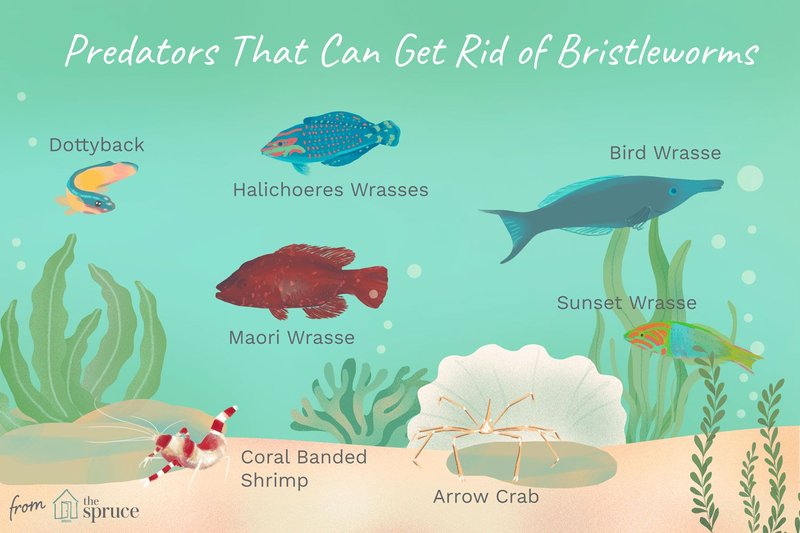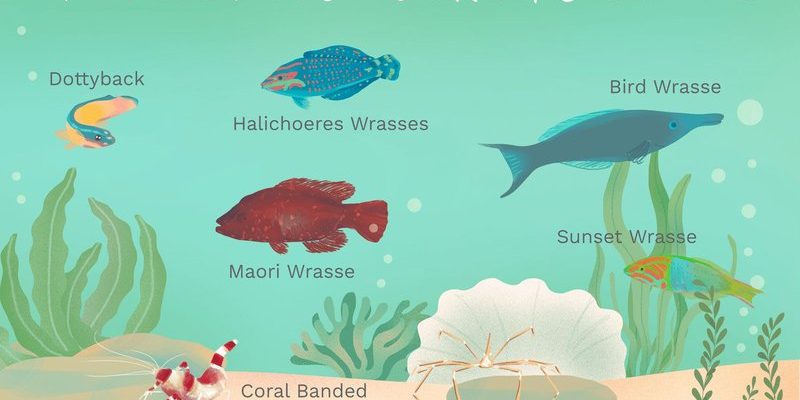
Think of bristle worms as the uninvited guests at your aquarium party—they can quickly turn from a few harmless visitors into a whole crowd. Luckily, nature has provided us with some excellent helpers to keep these critters at bay: their natural predators. By introducing the right fish or invertebrates into your tank, you can manage bristle worm populations effectively. So, grab a cup of coffee, and let’s dive into the best natural predators to control bristle worms!
Understanding Bristle Worms: The Good and the Bad
Before we jump into who can help, it’s essential to understand what bristle worms are. These creatures are part of the polychaete family and are commonly found in marine environments. They have bristles that can cause skin irritation, which is why they often get a bad rap. But here’s the kicker: bristle worms are also scavengers and help break down decaying matter in your aquarium.
However, when their numbers balloon, they can become problematic. A tank overrun with bristle worms may indicate an imbalance, like excess nutrients from overfeeding or insufficient clean-up crew members. They thrive in environments where there’s too much waste, so controlling their population is crucial for your aquarium’s health.
You might be wondering: “What’s the best way to handle this?” That’s where their natural predators come in. By incorporating certain species into your system, you can make sure bristle worms don’t take over, allowing your tank to thrive.
1. Wrasses: Nature’s Bristle Worm Bouncers
Wrasses are among the most effective predators for bristle worms. These vibrant fish are not only good-looking but also highly active and curious. They tend to scour the substrate, searching for tasty morsels, including bristle worms.
One popular example is the Six-Line Wrasse. This little dynamo is known for its voracious appetite for small invertebrates like bristle worms. Wrasses are typically friendly and can coexist with various tank mates, making them a perfect addition to your aquarium ecosystem.
However, be mindful of their temperament; some wrasses can be a bit territorial. If you’re thinking about adding one, ensure your tank is spacious enough to accommodate its needs.
2. Mandarinfish: The Colorful Hunter
Mandarinfish are stunning, with their intricate patterns and colors. But what makes them particularly interesting in the context of controlling bristle worms is their feeding behavior. These fish graze on the substrate and rock surfaces, picking off small invertebrates, including pesky worms.
Here’s the catch: mandarinfish require a well-established tank to thrive, as they need a steady supply of copepods (tiny crustaceans) to eat. If you already have a healthy ecosystem, introducing a mandarinfish can help manage bristle worm populations while adding a splash of color to your aquarium.
If you’re worried about keeping a mandarinfish happy, consider setting up a copepod culture. This gives them a reliable food source, allowing them to focus on hunting down those bristle worms.
3. Jawfish: The Excavators
Jawfish offer a unique approach to controlling bristle worms. These fish are burrowing creatures, meaning they spend a lot of time digging into the substrate. With their constant movement, they can disturb bristle worm habitats and prevent them from settling in.
Not only do jawfish help control bristle worms, but they also contribute to the overall health of the substrate. Their burrowing aerates the sand and helps break down detritus, which can lead to healthier water conditions. Just keep in mind that jawfish need a sandy substrate to dig in. They also prefer to have plenty of hiding spots and space to explore.
Adding jawfish to your tank can be an effective way to keep bristle worms in check while enhancing the quality of your aquarium environment.
4. Shrimp: Tiny Warriors
When it comes to natural bristle worm predators, you can’t overlook the role of certain shrimp. Various species, including cleaner shrimp, can be surprisingly effective at managing worm populations. These shrimp actively search for small invertebrates and will munch on bristle worms when they come across them.
Cleaner shrimp, like the Skunk Cleaner Shrimp, are particularly popular in reef tanks. They not only eat bristle worms but also help maintain the health of larger fish by cleaning parasites off their bodies. It’s a win-win situation!
If you decide to add shrimp to your tank, create hiding spots so they can feel secure. This way, they’re more likely to thrive and perform their essential cleaning duties.
5. Crab Species: The Opportunistic Nibblers
Crawling around the tank, crabs can be surprising allies in managing bristle worm populations. Species like the Emerald Crab or Sally Lightfoot Crab are known to feed on various invertebrates, including bristle worms. Their scavenging behavior means they’ll take advantage of any opportunity to snack on these pests.
However, you’ll want to be cautious about which crabs you introduce, as some can be territorial or aggressive toward tank mates. It’s essential to consider your tank’s balance before adding crabs.
If you create a diverse environment with plenty of hiding spots, you can keep crab species alongside other tank inhabitants without too much drama.
6. How to Introduce Natural Predators
Introducing natural predators into your aquarium can be a game-changer. It’s essential to do this thoughtfully to ensure a successful integration. Start by researching the specific needs and behaviors of each predator you consider.
Here’s a simple approach:
- Research: Understand each predator’s compatibility with your existing tank inhabitants.
- Acclimatize: Slowly introduce your new fish or invertebrates to reduce stress. Use a drip acclimation method for best results.
- Observe: Watch how the predator interacts with its new environment and other tank mates.
- Feed Properly: Make sure your new additions have enough food to establish themselves and encourage their hunting instincts.
Remember, the goal is to create a balanced ecosystem where your new predators can thrive while keeping your bristle worm population under control.
7. Monitoring and Maintaining Balance
Once you’ve introduced natural predators, it’s crucial to monitor their impact on bristle worm populations. Keep an eye on their effectiveness and the overall health of your aquarium. You might find that certain predators work better than others based on your specific setup.
Additionally, maintaining a balanced environment involves regular tank maintenance. Here are a few tips:
- Regular Water Testing: Check parameters like ammonia, nitrate, and pH to ensure a stable environment.
- Proper Feeding Practices: Avoid overfeeding, as excess food can lead to bristle worm overpopulation.
- Tank Cleanup: Regularly clean your tank to remove detritus and waste that can fuel bristle worm growth.
By keeping a close watch and maintaining a clean environment, you can effectively control bristle worms without relying solely on chemical treatments.
Controlling bristle worms in your aquarium doesn’t have to rely on harsh chemicals. Embracing natural predators like wrasses, mandarinfish, shrimp, jawfish, and crabs can create a balanced and vibrant ecosystem. Each of these species brings unique benefits to your tank, making them essential allies in the battle against bristle worm overpopulation.
So, before you reach for that bottle of chemicals, consider inviting a few of these natural predators into your aquatic family. They might just be the perfect solution to keep your tank healthy and thriving. With a little patience and care, you’ll soon have an aquarium that’s not just free of pests but also bursting with life!

